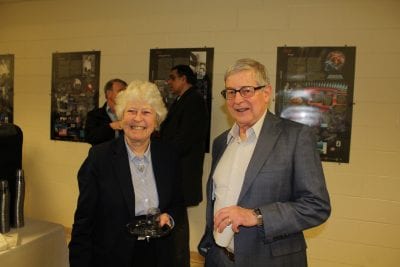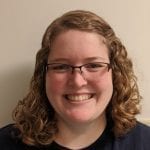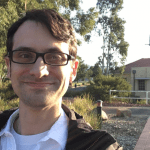October 12, 2020 – Kim Krieger – UConn Communications
When people imagine new materials, they typically think of chemistry. But UConn physicist Ilya Sochnikov has another suggestion: mechanics.
Sochnikov works with superconductors. Superconductors are materials that let electricity flow without losing energy. In a normal conductor — say, a power line — electric current is gradually whittled down by friction and loss. We lose as much as 90% of the electricity we generate this way. But an electric current could flow through a superconducting circuit forever, unchanging. Practical superconductors would make power grids and many devices, including new computers, much more energy efficient.
Chemists and metallurgists have experimented with different combinations of elements for years, trying to get superconductors that work at temperatures close to room temperature (most superconductors only work when they are super cold.) The idea is to come up with the perfect combination of elements that will have exactly the right density of electrons, at the right energies. When that happens, electrons pair up and move through the material in a synchronized way, even at temperatures above 77 degrees Kelvin, which is the temperature of liquid nitrogen. That is considered a high-temperature superconductor, because liquid nitrogen is cheap to produce and can be used as a refrigerant. But finding the right chemistry to make new and better high-temperature superconductors has been elusive.
Sochnikov and his students are thinking about it differently. What if mechanical changes such as squeezing or stretching could make a material a superconductor? Changing the chemistry is ultimately about changing the arrangement of atoms and electrons in a material. Mechanical stresses can do the same thing, in a different way.
Along with Physics Department students Chloe Herrera, Jonah Cerbin, Donny Davino, and Jacob Franklin, Sochnikov designed a machine to stretch a small piece of superconductor to see what would happen. They picked strontium titanate, a well-known material used in high-tech electronics applications as big and almost perfect crystals, which becomes a superconductor around 0.5 degrees Kelvin. That is ridiculously cold, colder even than liquid helium. But strontium titanate behaves in a very weird way when it is that cold. Its atoms polarize; that means they all oscillate in synchrony. You can imagine them bouncing gently up and down, all together. These oscillations have a tendency to link electrons together, helping them move as a pair–this is probably what makes it superconduct.
Sochnikov and the students in the group knew that stretching strontium titanate would change how its atoms oscillated. That, in turn, might change how the electrons moved. The machine that stretches the crystal is made from copper to conduct heat away from the crystal. Most of the rest of the workings are coated in gold to reflect heat from the outside. It uses three cylinders to cool the material; first to the temperature of liquid nitrogen (70K), then liquid helium (4K), then to a boiling mixture of helium-3 and helium-4 (due to weird quantum effects, it is even colder than regular liquid helium–just a few thousandths of Kelvin! Really close to absolute zero!)
The whole setup is suspended in a steel frame that floats on shock absorbers, to prevent any vibrations in the floor from disturbing the experiment.
When Sochnikov, Herrera, Cerbin, Davino, and Franklin did the experiment and looked at the results, they found that stretched strontium titanate becomes superconducting at temperatures 40% higher than normal. That is a huge increase, percentage-wise. They believe it is because stretching the material makes it easier for the atoms to oscillate, gluing the electrons together more firmly. Now, they are working to calculate what made the difference, and plan on testing it in other materials in the near future.
“Usually we control materials chemically. Here, we do it mechanically. This gives us another tool to bring superconductors closer to everyday life, and to discover new functionalities,” Sochnikov says.
This article first appeared online on UConn Today, October 12, 2020.





